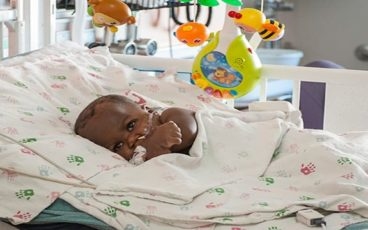Scoliosis
Scoliosis is a condition causing the spine to curve sideways to the right or left. Adolescent idiopathic scoliosis (AIS), for which the cause is unknown, is the most common type of scoliosis. It occurs in kids between the ages of 10 and the time a child is fully grown, affecting girls more often than boys. There are several different types of scoliosis that affect infantile, children, juvenile and adolescents.
Signs and Symptoms
- Unequal limbs
- Uneven shoulders
- Uneven waistline
- Unequal levels of the hip
- Protrusion of one shoulder blade
- Abnormal walking
- Abnormal spine curvature
- Leg length discrepancy
- Back pain (although often there is no pain)
Making a Diagnosis
The standard screening for scoliosis is the "Adam's forward bend test." Your pediatric orthopedic doctor will complete a physical exam to look for a curvature of the spine, test reflexes, and check the symmetry of your child’s hips and shoulders. They will also order X-ray images. In many cases, scoliosis curves are small and do not require treatment. However, timely treatment of adolescent idiopathic scoliosis is essential because, if the condition is left untreated, a spine curvature can develop into a significant deformity that may ultimately require surgery.
Treatment Options
The location and severity of the curve along with the child's age is taken into account when considering treatment plans.
Nonsurgical
If your child's spinal curve is less than 20 degrees or if they are almost full-grown, the doctor may recommend observation, sometimes physical therapy. Your doctor will recheck every six to 12 months, with follow-up X-rays until skeletal maturity.
If your child’s spine curvature is less than 25 degrees or if they are almost full-grown, their doctor may recommend observation for a specified period of time. They will recheck your spine every six to 12 months.
If your child’s spine curvature is between 25 to 45 degrees and your child is still growing, bracing will be recommended to prevent a scoliotic curve from progressing. This can help prevent it from getting worse to the point of required surgery.
Surgical
Surgery for adolescent idiopathic scoliosis may be necessary to correct spine curvature when nonsurgical options fail or if the curve is greater than 45 to 50 degrees. A surgical procedure called spinal fusion may be recommended.
Spinal fusion will significantly straighten the curve and fuse the vertebrae together to heal into a single, solid bone. This fusion will stop the growth ini the curved part of the spine affected by scoliosis.



